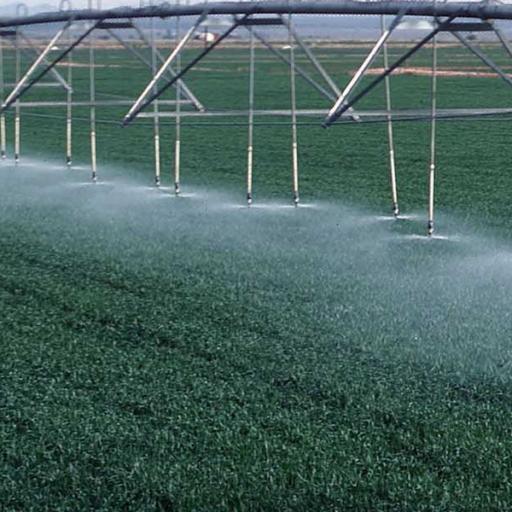Based on the seminal works of Debreu (1951) and Farrell (1957), much research has been devoted the last decades to the investigation of technical inefficiency of farming households in both developed and developing countries. The majority of this empirical work has been focused almost exclusively on the performance evaluation of farm activities, that is, on farmers' ability to utilize efficiently existing crop or livestock technology. Moving away from the traditional microeconomic paradigm, this vast literature provided a more realistic framework of farmer's behavior allowing them to make mistakes in the production of farm output and resource use. Yet, production and consumption decisions within rural households are linked as the deciding entity is both a producer, choosing the allocation of labor and other inputs to farm production, and a consumer, choosing the allocation of income from farm profits and labor sales to the consumption of commodities and services. Hence, if production and consumption decisions are not independent, the way that farm resources are utilized in crop or livestock production is directly affecting individual decisions and the overall efficiency of farming households.
Building upon the classic works by Singh, Squire and Strauss (1986) and others, a series of agricultural household models have been developed aimed to analyze consumption decisions by rural households.Among those, the nonseparable household modeling apparatus has become the workhorse for the analysis of labor supply decisions. With perfectly competitive markets for all inputs and all outputs, price-taking farming households would make separate decisions regarding production and consumption. First, household is choosing inputs and outputs to maximize profits in all farming activities given its production possibilities and then allocate its full income to the consumption of goods, services and leisure maximizing welfare for family members. Ownership of the variable factors of production and labor supplied on-farm is irrelevant for farming decisions and affect consumption only through income level including profits generated by farm activities. In these instance measuring efficiency of farm production independently from household decisions is legitimate assuming though that household members are aware of their mistakes in utilizing farm technology appropriately in maximizing their own utility.
Typically, some type of markets for factors of production or crops produced may exist even in the underground economy. However, still markets may fail for farming households when they face wide margins between selling and buying prices for any factor of production (including family labor) or farm output produced (de Janvry et al., 1991; Key et al., 2000). According to Sadoulet and de Janvry, (1995) these price margins are affected by: a. differences in transactions costs, e.g., distance from the market, poor public infrastructure, monopoly power by local wholesalers, information asymmetries and incentive costs on hired labor; b. shallow markets vulnerable to variation in crop production locally; c. farmers' risk aversion as selling or buying prices are discounted by household members to hedge against risk; and d. by limited access to working capital credit as households need to balance their budget throughout cropping season. An additional reason that contributes to rural markets failure, widening further crop price margins for households, is the existence of technical inefficiency in farm production. In effect, failure to utilize farm technology efficiently, implies that revenues generated from crop or livestock production are less than those associated with maximal output reducing effective crop price for household members. Farm profits are lower than those expected and households are forced to diversify labor and land resources as a precaution altering their optimal consumption decisions.
Family labor is a quasi-fixed input for rural households and it's allocation between farm and non-farm activities has important consequences on their welfare. Market inconsistencies and household's inability to utilize optimally farm technology are affecting optimal behavior resulting in turn to further inefficiencies at the household level. Equilibrium wage rates and employment levels in rural areas depend not only on the demand for labor, but also on households' labor supply decisions. Thus, the effectiveness of policy or project interventions to assist rural households depends crucially on labor supply behavior taking into account at the same time efficiency in farm production. Therefore measuring the extent to which household members are making allocation errors as a response to farming inefficiencies is important element of efficiency analysis particularly for small family farms that hinge on off-farm income to sustain their farming activities and their prosperity.
Nevertheless, a significant part of the empirical research on farm efficiency in both developed and developing countries is using off-farm income levels to explain technical efficiency differentials among rural households as a driving force for improved (or deteriorated in some instances) resource utilization in farm production (e.g., Pfeifer et al., (2009), Lien et al., (2010), Chang and Wen (2011). Besides erroneously assuming a separable agricultural household model structure, this part of the agricultural economics literature ignores the interdependence between farm production and consumption inherent in households' decision making process. To our knowledge there are only three papers dealing appropriately with the interdependence between production and consumption sides of farm households in an attempt to measure overall household inefficiency. Chavas et al., (2005) first argued that under labor market rigidities the appropriate level of analysis is the rural household. He assumes though a joint technology of farm and non-farm activities utilizing a profit frontier to estimate non-parametrically technical, allocative and scale efficiency at the household level. Along this line Fletschner (2008) and Lovo (2011) provided empirical measures of household inefficiency for a sample of rural farmers in Paraguay and South Africa, respectively. All three papers are treating off-farm income as a separate output of farming household technology that is fitted into the conventional warehouse of non-parametric or stochastic frontier analysis to measure all types of inefficiencies at a household level.
Along the same line, the present paper develops a rural household model, based on Lopez (1984) non-separable assumption of household decisions and using Kumbhakar (2001) and Chambers et al., (2010) definitions of profit efficiency, tracing the impact that farm inefficiencies may have on individual consumption decisions. Allowing errors in the utilization of farm technology, ensures that maximal potential farm output is not attained. Rational rural households, realizing that on-farm family labor is less profitable, responds by altering labor supply decisions between on- and off-farm activities. Leisure and marketed good consumption is reduced due to lower farm profits, but at the same time households switch family labor resources to off-farm activities to mitigate losses in their welfare. Therefore, instead of assuming a joint household technology, we provide a theoretical framework to disentangle these effects and measure the actual losses of household members from failing to utilize efficiently farming technology.







